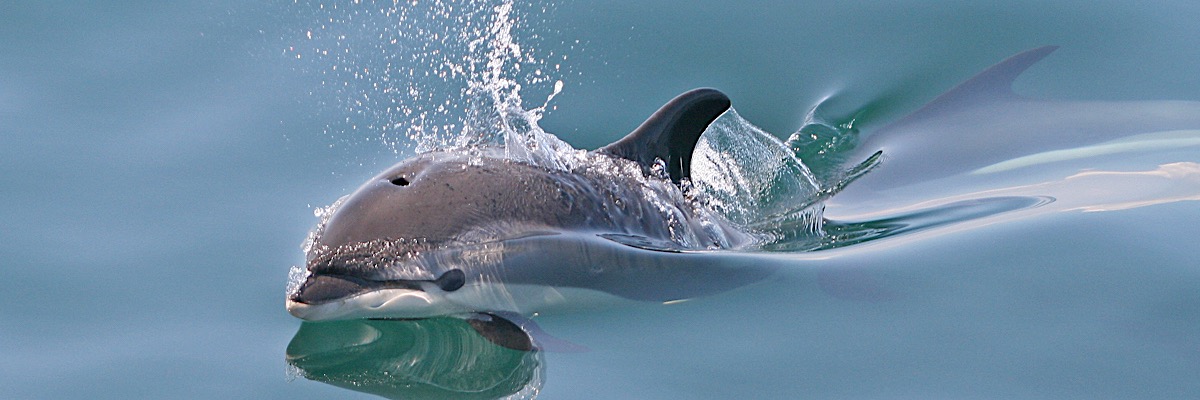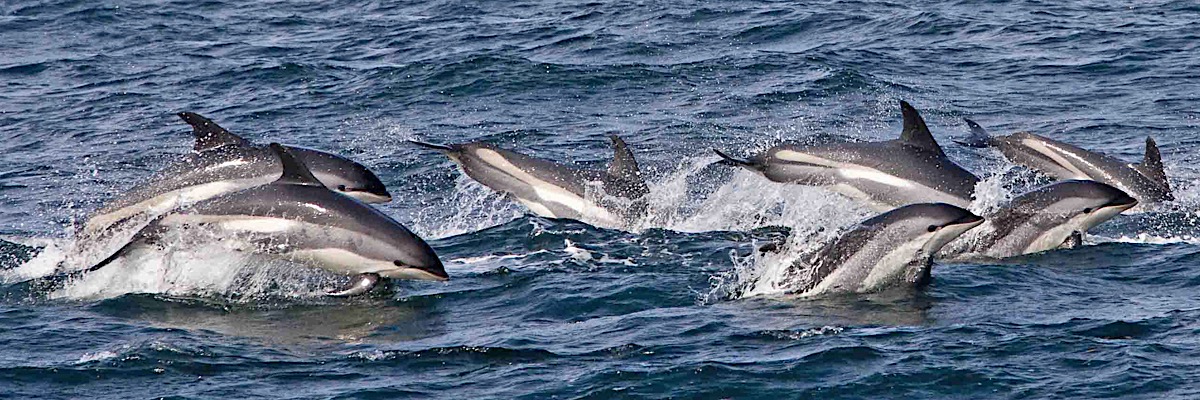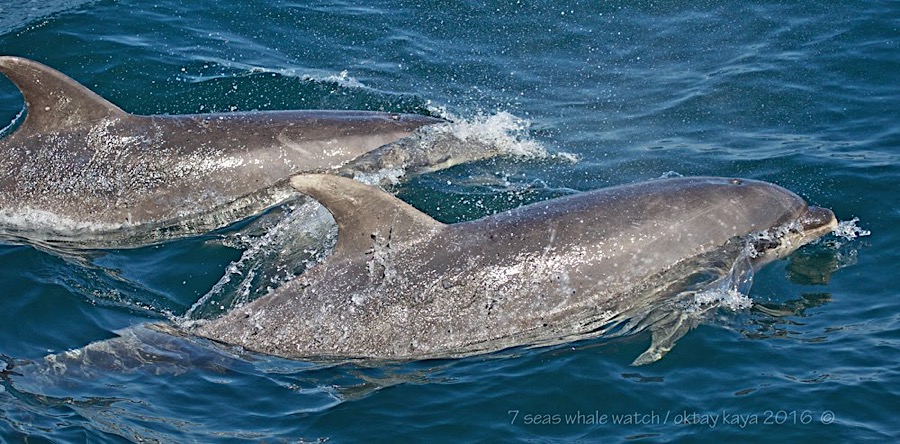ATLANTIC WHITE-SIDED DOLPHIN
(Lagenorhynchus actutus)
A great addition to any whale watch out of Gloucester is a sighting of Atlantic White-Sided Dolphins leaping and splashing at the ocean’s surface.
Unlike the larger baleen whales (or ” Mysticetes“), toothed whales (or ” Odontocetes“) nearly always travel in large family groups called “pods”. Pods can consist of anywhere between 2 and 2,000 individual dolphins, although pods of 15 to 50 are more the norm.
Not much is known about the social structure of these pods as Atlantic White-sided Dolphins have not been studied in great detail. We can make some educated guesses as to the lives of these little whales, however, by drawing upon research done on other dolphin species. For example, Orca or “Killer Whales” (which are the largest member of the dolphin family) in the Pacific Northwest have been extensively studied for years and much is know about the social structure of those animals. Orcas travel in small family groups that remain together throughout their entire lives with as many as five generations occupying a single pod. Occasionally, many family pods of Orca gather together so that members of different pods can mate and thus avoid in-breeding. The large aggregations of 300 of more White-sided Dolphins that we often see in late Summer and Fall may represent similar gatherings of several family pods.
White-sides can be easily recognized in the field by their large dorsal fins, dark-gray backs, white bellies, silver sides, and especially by the tan-and-white stripes on the flanks of each dolphin.
If you want to increase your chances of spotting this species on your whale watch try to come out in the early spring (April-May) or in the fall (September-October). Although White-Sided Dolphins are can be found in our area all throughout the year, they are much more common in the winter than in the summer. Therefore spring and fall whale watchers have a better chance of seeing them than do people who go whale watching in July or August.
Interestingly, White-sided Dolphins have not always been nearly so common in the Gloucester area as they are today. Prior to the mid-1970’s, another species, the White-beaked Dolphin, was the common dolphin species in our area while the White-sided Dolphin was exceedingly rare. Now White-beaked Dolphins are rare and White-sides are a common resident.
A shift in prey abundance is the leading theory to explain this flip-flop in the dolphin fauna seen in the southern Gulf of Maine. Beginning in the mid-1970’s a species of fish called the American Sand Lance (the favorite food of Humpback Whales in our area) became much more common and the White-sided may have profited from this shift in prey distribution. White-beaked Dolphins prefer to eat squid and now only visit our area on rare occasions (they are more common farther north). This just goes to show that even the ocean can undergo rapid, unexpected changes and serves to illuminate our limited understanding of the dynamic processes that affect our environment.
Bottlenose Dolphin




